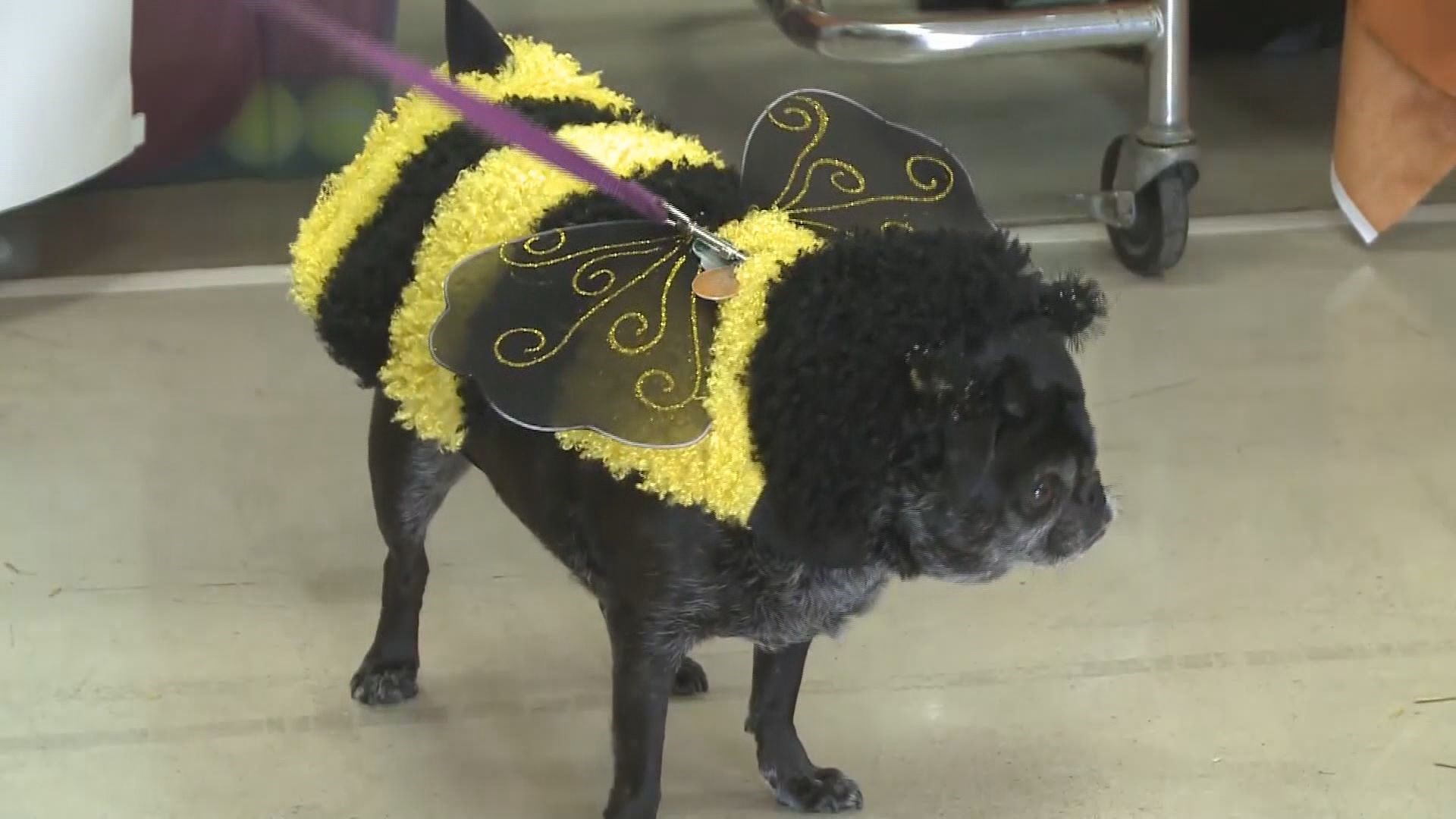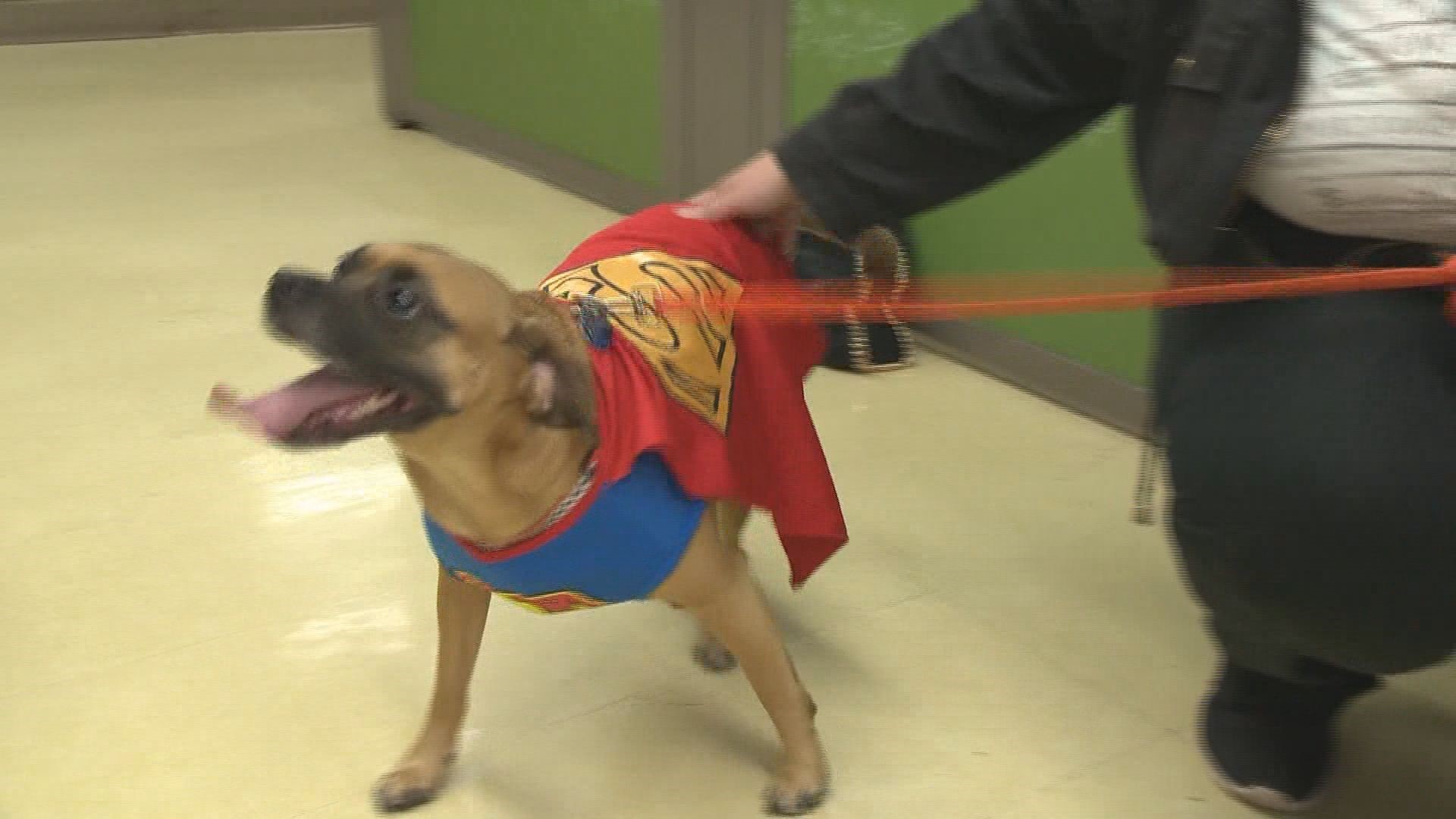GREENSBORO, N.C. — Halloween is a fun and spooky time for humans, but it can be a real nightmare for our furry friends. As you prepare for this year's festivities, it's crucial to be aware of the potential hazards that Halloween can pose to your pets and take steps to keep them safe. Here are some top toxins and safety tips to ensure your pets have a happy and healthy Halloween.
Top Toxins:
1. Chocolate: It's no secret that chocolate is a beloved Halloween treat, but it's also the most common poison for dogs. While cats are less likely to indulge in chocolate, dogs can't seem to resist its allure. The darker the chocolate, the more dangerous it becomes. Even a small amount can be fatal for your pet. To prevent this, make sure to keep all chocolate products safely stored out of your pet's reach.
2. Candy Ingestion: Beyond chocolate, the candy itself can be problematic for pets. The high sugar and fat content in candy can lead to gastroenteritis and pancreatitis, causing symptoms like vomiting, diarrhea, and abdominal pain. Keep candy out of your pet's reach, and be vigilant about checking for any dropped or misplaced sweets.
3. Candy Wrappers: Sometimes it's not just the candy that poses a danger. Ingested candy wrappers can cause intestinal foreign body obstructions, which may require surgical intervention. Dispose of wrappers properly and keep them away from your curious pets.
4. Grape/Raisin Ingestion: Snack boxes of raisins might seem like a healthy choice, but they are poisonous to dogs. Even small amounts of raisins or grapes can lead to kidney failure, and the exact toxic dose varies between individuals. Treat any ingestion of raisins or grapes as a potential poisoning case and seek immediate veterinary care if your pet consumes them.
5. Glo Sticks or Jewelry: Cats often find glow stick necklaces and bracelets irresistible to chew on. While not usually life-threatening, the fluid inside these items can cause mouth pain, irritation, drooling, and foaming. Keep these glow-in-the-dark items out of your cat's reach.
6. Sugar-Free Gum and Candy: Sugar-free products containing xylitol can be deadly to pets. Even a small amount can cause low blood sugar and potentially lead to liver failure. Be extra cautious about storing these products securely and disposing of them properly.
Other Dangers:
1. Costumes: While dressing up your pet in costumes can be adorable, prioritize their comfort and safety. Ensure the costume doesn't hinder their vision, movement, or air intake. Watch out for small costume components that could be ingested and lead to poisoning. Avoid dyeing or applying coloring to your pet's fur, as even non-toxic dyes can be harmful.
2. Candles: Real candles in Jack-o-lanterns and decorations can be a fire hazard, especially if your pet is curious or excitable. Opt for safer alternatives like battery-operated candles to prevent burns and accidents.
Safety Tips:
In addition to being aware of potential hazards, follow these safety tips to ensure your pet's well-being on Halloween:
- Create a safe space for your pet away from the front door and the commotion of trick-or-treaters.
- If your pet becomes anxious with the doorbell ringing, consider setting up your candy giveaway in the driveway to avoid constant disruptions.
- For anxious pets, consider using a thunder shirt or consult your veterinarian about medications that can help reduce their anxiety.
- Ensure your pet is wearing a collar or body harness with up-to-date identification tags containing your contact information.
- If your pet isn't already microchipped, consider getting it done to increase the chances of reuniting with them if they get lost during the Halloween festivities.


